Issue Archive
Table of Contents
BLOOD COMMENTARIES
PERSPECTIVE
The challenge of clinical end points in sickle cell disease
Sickle cell disease (SCD) is a challenging condition for which more effective disease-modifying treatments are desperately needed. In this Perspective, Ataga discusses the limitations of relying on acute pain episodes as the key clinical end point in trials. The author explores opportunities for using health care utilization as the primary end point and emphasizes the importance of evaluating patient-reported outcomes. These insights should inform the design of randomized trials of novel agents in patients with SCD.
CLINICAL TRIALS AND OBSERVATIONS
The effects of pathogenic and likely pathogenic variants for inherited hemostasis disorders in 140 214 UK Biobank participants
Clinical Trials & Observations
Population-scale association of phenotype with genotype is increasingly possible, allowing robust determination of whether genetic variants explain potentially clinically important differences among individuals in hemostasis. Exploiting the power of the UK Biobank, Stefanucci et al examined 213 putative “pathogenic” or “likely pathogenic” variants present in 46 genes (including those for coagulation factors, natural anticoagulants, and those associated with platelet traits) present in 7432 participants. For the first time, this work enables determination of the magnitude of effects for each variant on both laboratory and clinical phenotypes, clarifying the impact for many of these.
LYMPHOID NEOPLASIA
Prognostic significance of ETP phenotype and minimal residual disease in T-ALL: a Children’s Oncology Group study
Clinical Trials & Observations
Early T-cell precursor (ETP) acute lymphoblastic leukemia (ALL) is a biologically and clinically unique subset of T-cell acute lymphoblastic leukemia (T-ALL), first defined in 2009 as poor prognosis. Wood and colleagues report on the impact of contemporary therapy in ETP and so-called “near-ETP” ALL. The authors’ data confirm that both of these subtypes are associated with higher rates of induction failure, but with modern risk-adjusted therapy, 5-year survival (80%) is excellent and similar to non-ETP T-ALL.
MYELOID NEOPLASIA
PPM1D modulates hematopoietic cell fitness and response to DNA damage and is a therapeutic target in myeloid malignancy
Miller et al examined the role of increased activity of protein phosphatase Mg2+/Mn2+ dependent 1D (PPM1D), a negative regulator of TP53 and the DNA damage repair pathway, on chemotherapeutic resistance of hematopoietic stem cells (HSCs). The authors’ data indicate that PPM1D is a crucial regulator of HSC fitness and that its absence or pharmacological inhibition leads to greater sensitivity of malignant cells to chemotherapy, including in acute myeloid leukemia (AML) xenografts. These findings will prompt further exploration of PPM1D as a therapeutic target in AML.
THROMBOSIS AND HEMOSTASIS
Hemostasis defects underlying the hemorrhagic syndrome caused by mammarenaviruses in a cynomolgus macaque model
Mammarenavirus infection in cynomolgus macaques is a potential model for viral hemorrhagic fevers, such as Lassa and Machupo fevers, in humans. Lafoux and colleagues analyzed the changes in hemostatic and platelet activation markers, finding that changes in these parameters recapitulated what is seen in patients. The authors’ data reveal that primary and secondary hemostasis defects as well as increased vascular permeability are responsible for inducing the severe hemorrhagic syndrome seen during arenavirus infection.
TRANSPLANTATION
Genotype, oxidase status, and preceding infection or autoinflammation do not affect allogeneic HCT outcomes for CGD
Clinical Trials & Observations
Allogeneic hematopoietic cell transplantation (HCT) is the definitive treatment for chronic granulomatous disease (CGD), but there has been uncertainty about patient selection. Leiding et al describe the outcomes of a multicenter study, confirming that HCT significantly reduces disease burden, independent of age, genotype, oxidase status, and history of preceding infections/autoinflammation. The authors’ data suggest that where an HLA-matched donor is available, HCT should be performed prior to the development of major comorbidities as poor performance status and active infection are associated with poorer outcomes.
LETTER TO BLOOD
Epidemiology and geographic clustering of Erdheim-Chester disease in Italy and France
Clinical Trials & Observations
BLOOD WORK
ERRATA
-
Cover Image
Cover Image
![issue cover]()
Confocal scanning of a lung section from a Lassa virus–infected cynomolgus monkey, stained for viral RNA (red), double positive cells (yellow), and endothelial cells (CD31, green) with individual cell detection and classification according to Lassa virus RNA and/or CD31 positivity. See the article by Lafoux et al on page 2092.
- PDF Icon Front MatterFront Matter
- PDF Icon Table of ContentsTable of Contents
- PDF Icon Editorial BoardEditorial Board
Advertisement intended for health care professionals
Email alerts
Advertisement intended for health care professionals


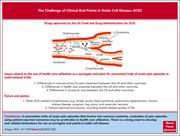
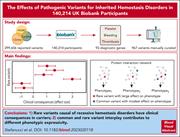
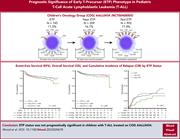
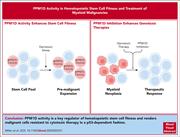
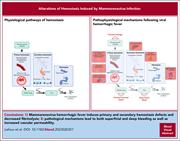
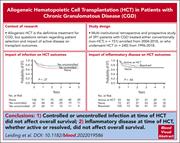

From black and white to fifty shades of grey
Clinical Trials & Observations